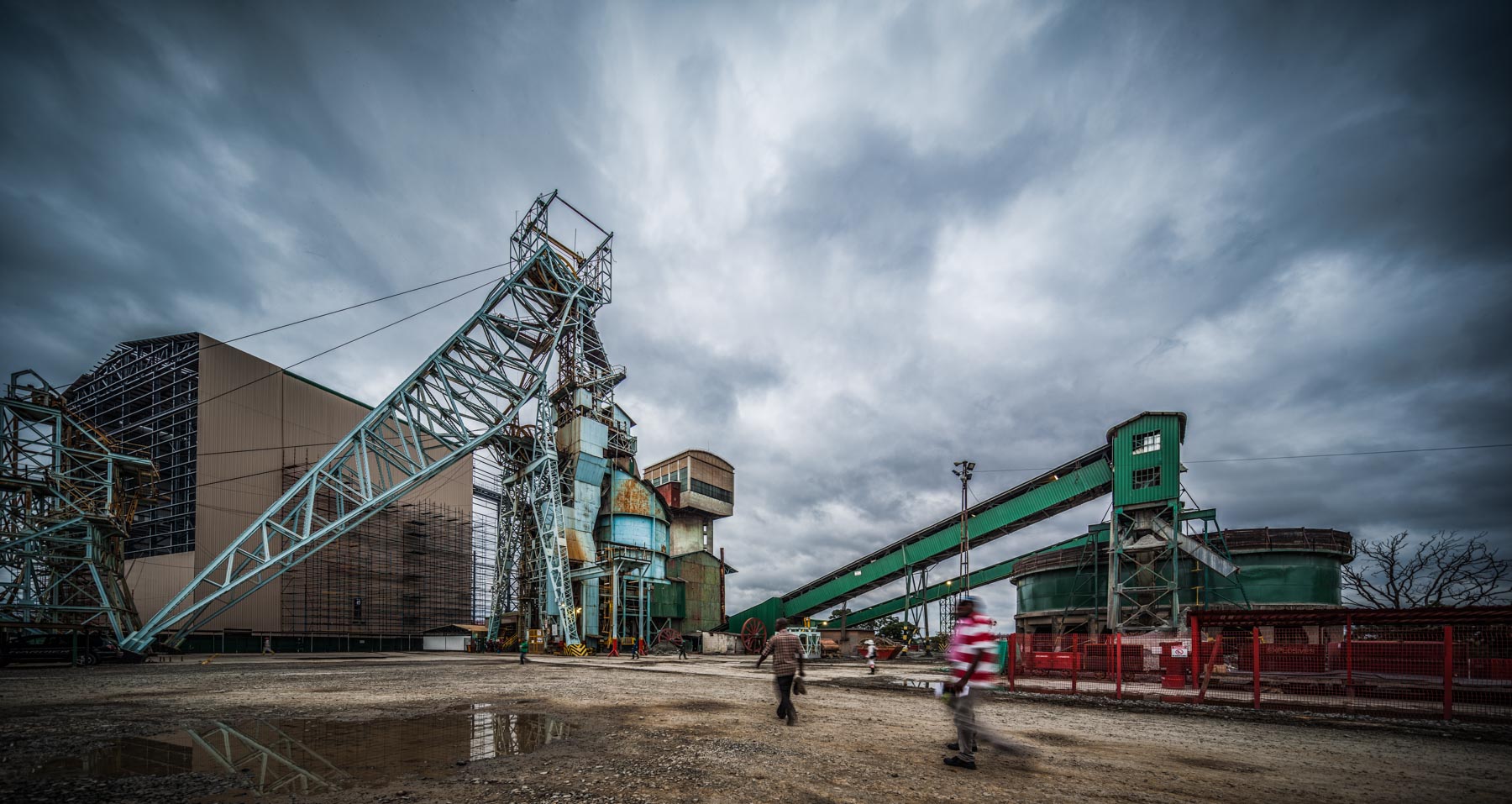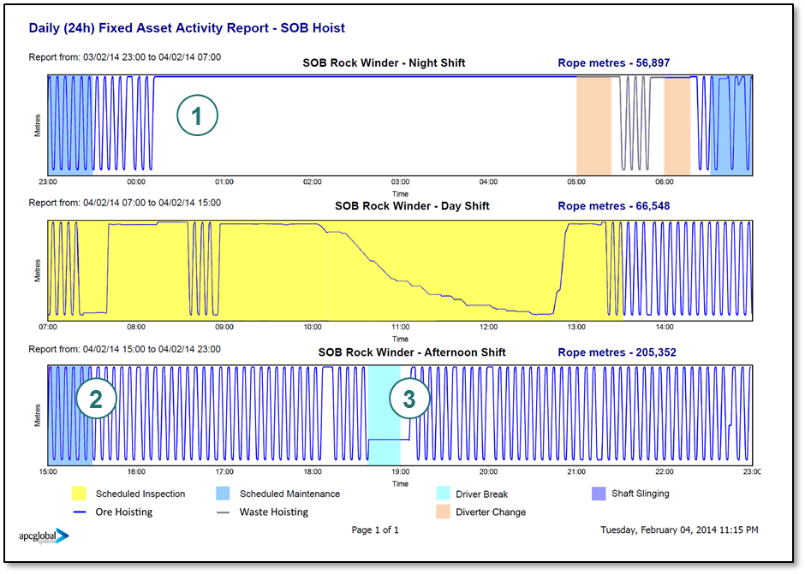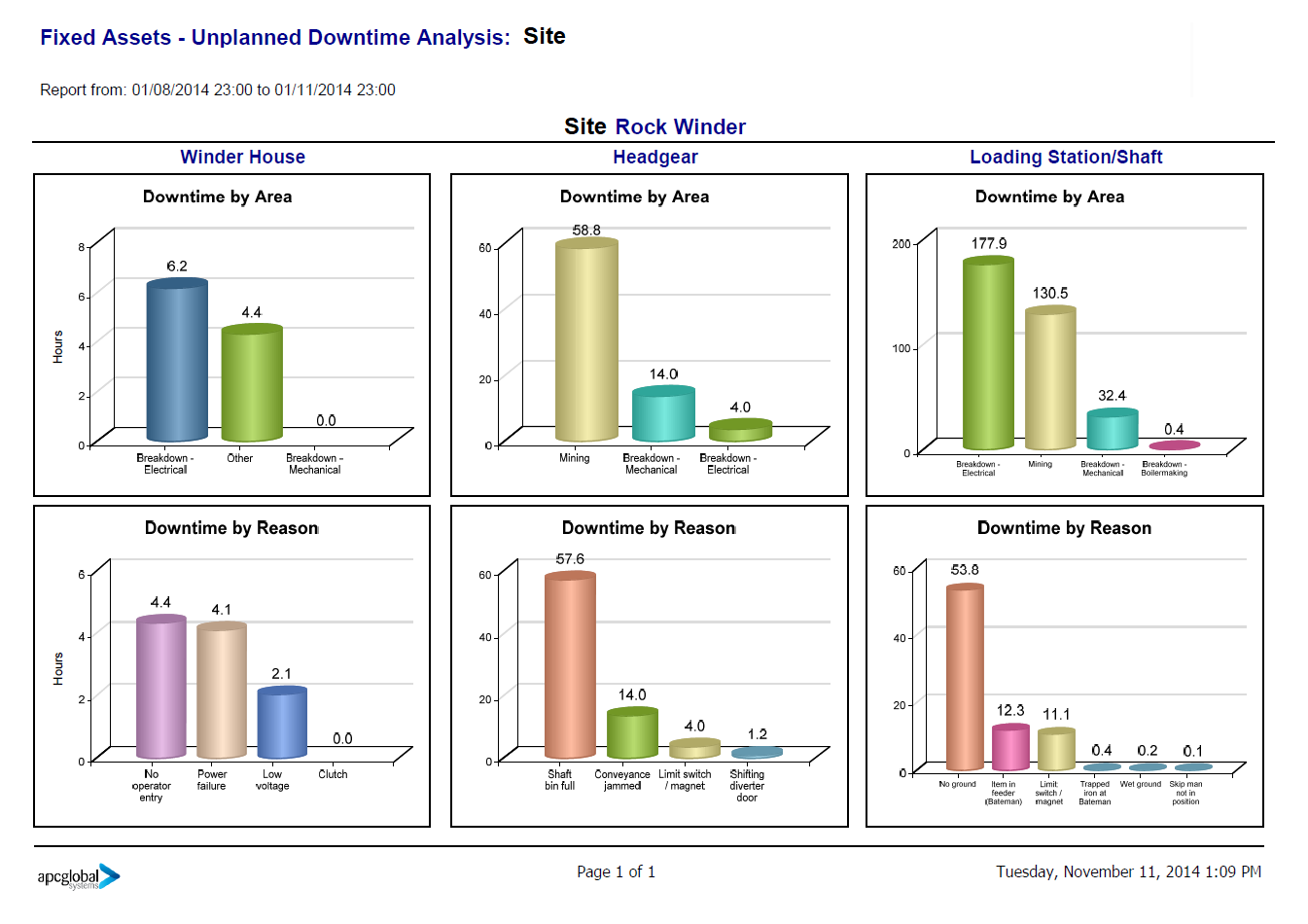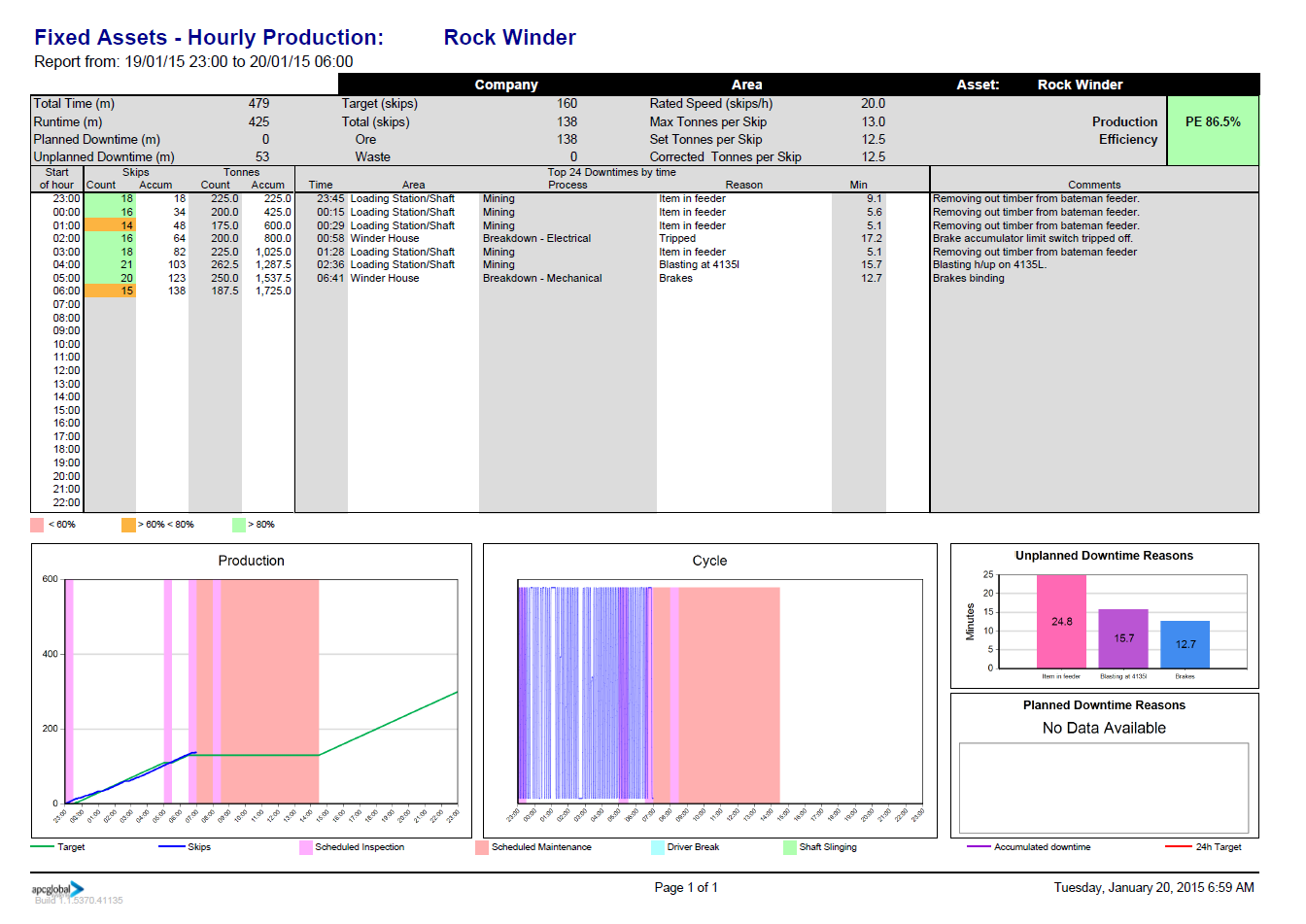Our client, Glencore Copper Africa, engaged APC to investigate a hoisting shaft that had an ageing infrastructure and performance below expectations. Reporting on the hoisting activity was manual and the information was inaccurate and 24 hours old. The choices were to perform a substantial upgrade of the hoist, or to improve the performance of the existing hoist, while not materially impacting production.
APC determined that the performance of the existing hoist could be improved, by deploying a real-time monitoring and tracking system that provided visibility, stoppage recording, and automated communication. The design criteria were rapidly installable, highly visible, and conducive to cultural change and sustainability.





